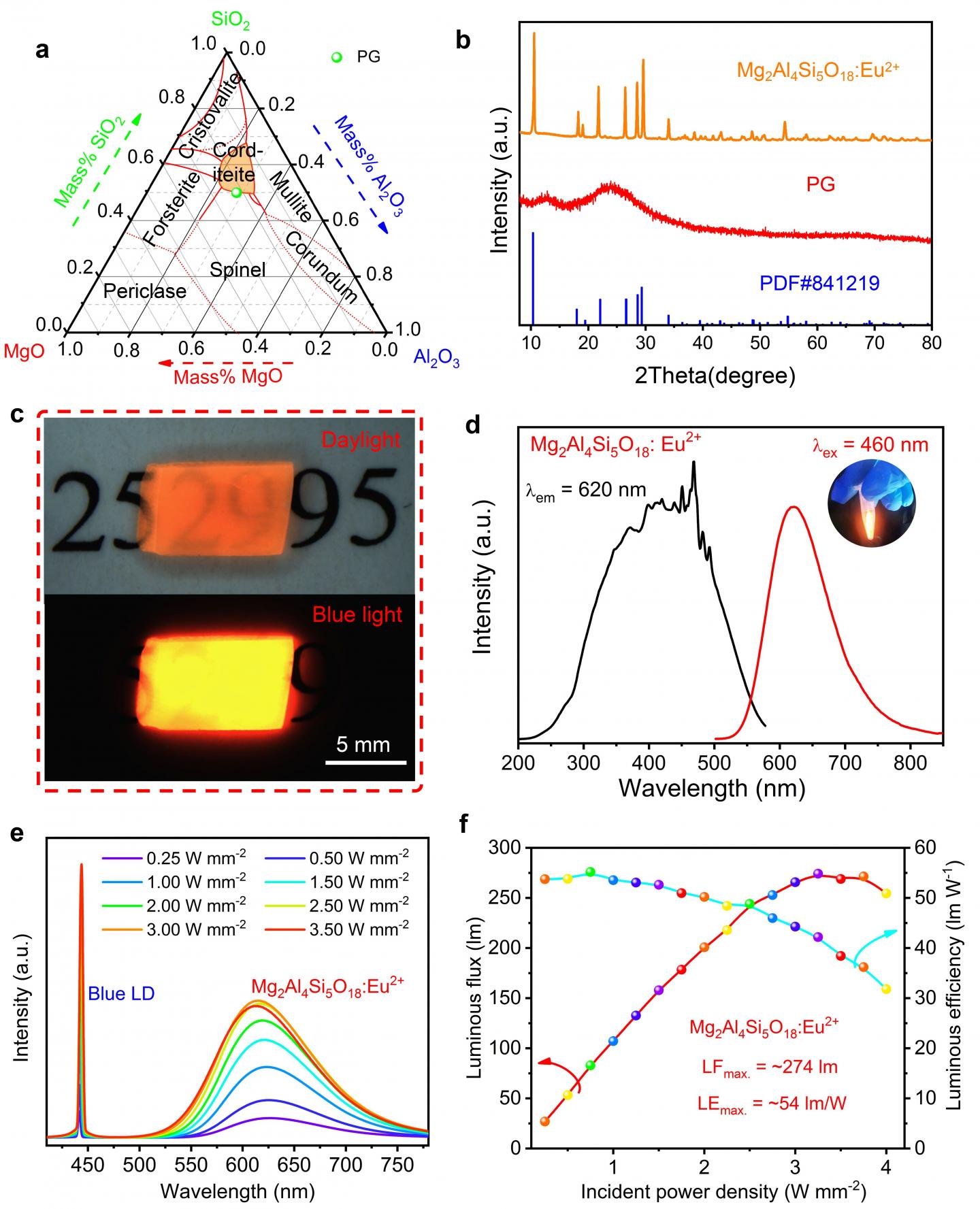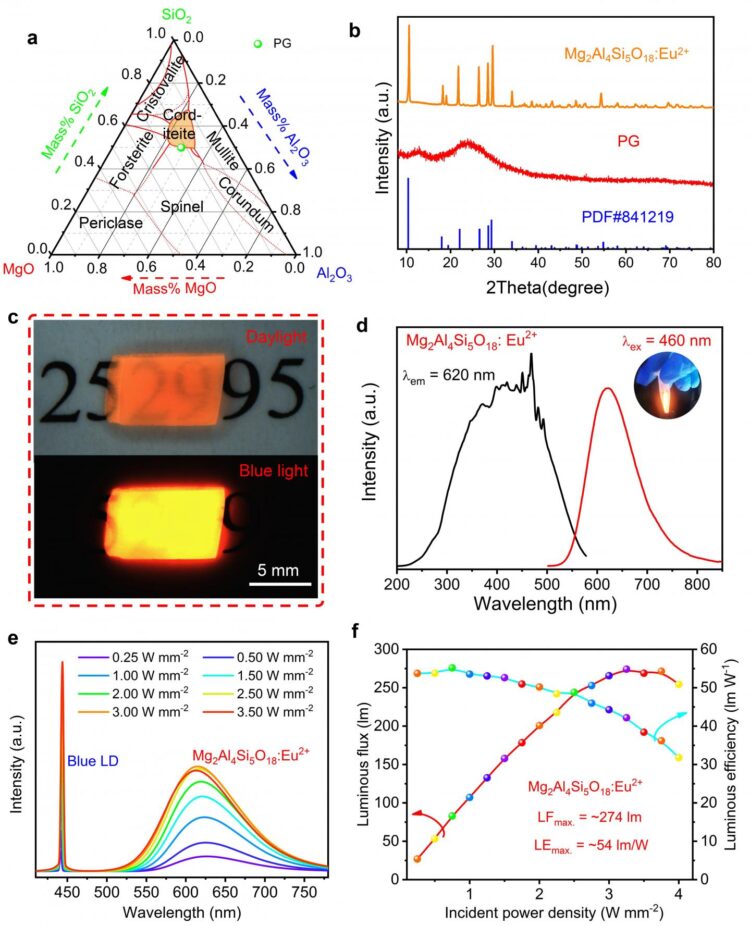
Credit: by Tao Hu, Lixin Ning, Yan Gao, Jianwei Qiao, Enhai Song, Zitao Chen, Yayun Zhou, Jing Wang, Maxim S. Molokeev, Yu-Chun Chuang, Xiaoxing Ke, Zhiguo Xia and Qinyuan Zhang
High-power laser diode (LD) driven solid-state lighting can generate super-high luminance far exceeding the state-of-art light-emitting diodes (LEDs) source by factors of 2-10, enabling it particularly attractive for automotive headlamp, outdoor lighting, multimedia projectors, laser TVs and so on. Whereas, the thermal shock of laser is extreme, and under intense laser excitation, traditional LEDs phosphor would suffer from luminescence degradation or even failure due to the luminescence saturation. Aiming to overcome this deficiency, highly efficient and stable luminescence bulk phosphors including single crystal, polycrystalline ceramic phosphor and glass ceramic composite phosphor have received enormous attentions. Due to easy fabrication, low cost, mass production and excellent optical properties, luminescent glass ceramics are deemed as the most promising and reliable color converter for high-power laser application.
On the other hand, the routine way for constructing high-power lighting based on”blue laser + yellow-emitting YAG:Ce3+ garnet”is flawed in applications for the lack of red component. However, there is no commercially available red-emitting bulk phosphor, and their explorations remain stagnating, which severely restricts the further developments of high-power lighting.
In a new paper published in Light Science & Application, a team of scientists, led by Professor Zhiguo Xia and Professor Qinyuna Zhang from South China University of Technology, has developed an efficient red-emitting Mg2Al4Si5O18:Eu2+ composite phosphor by using thermal-treatment induced glass structure relaxation and crystallization method, and Professor Lixin Ning from Anhui Normal University performed the theoretical calculation to support the experimental findings. Under 450 nm blue light excitation, intense red emission at 620 nm with high internal/external quantum efficiency of 94.5%/70.6% and high thermal stability was realized. Noteworthy, there are rare reports of fabrication of Eu2+ activated red-emitting glass ceramic phosphor by glass crystallization method. DFT calculations and EXAFS fittings uncover the Eu2+ activators quasi-planar coordinated with 6-oxygens at vacant channel of Mg2Al4Si5O18 crystal. Red-emitting laser-driven device constructed by coupling the phosphor with 445 nm blue laser shows a high laser saturation threshold of 3.25 W mm-2, high luminous flux of 274 lm, and luminous efficiency of 54 lm W-1, which is almost the highest rank among red bulk phosphors. The reported Mg2Al4Si5O18:Eu2+ composite phosphor holds potential for addressing the lack of commercially available all-inorganic red-emitting bulk color converter, and will provide great step towards the advancement of the solid-state lighting technology for new photonic applications.
###
Media Contact
Lixin Ning
[email protected]
Related Journal Article
http://dx.





